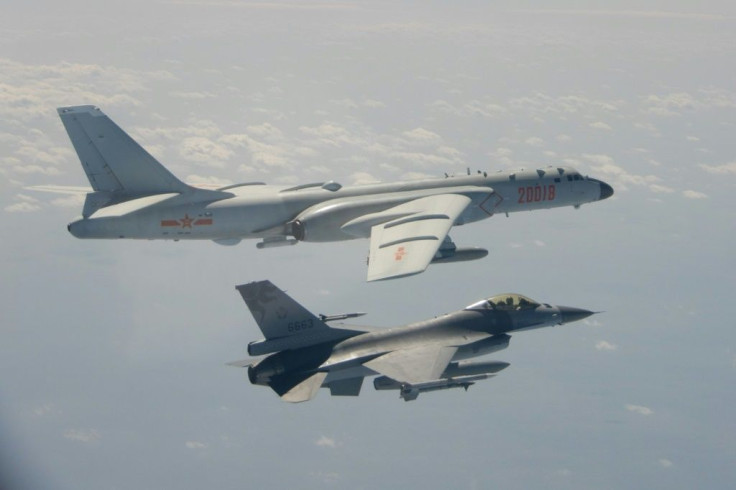The Strategic Reason Why PLA Aircraft Fly To Taiwan's Southwestern Zone
KEY POINTS
- Taiwan has two underground hangers in Hualien and Taitung that can accommodate 400 jets
- These hangers help fighter jets avoid a PLA first strike due to wide mountain coverage
- PLA aircraft stick to the southwest zone to avoid disrupting civilian planes
As China's invasion threat looms over Taiwan, the island nation has reported a record number of PLA aircraft incursions into its Air Defense Identification Zone (ADIZ). As per figures, China flew over 450 sorties across the Taiwan Strait since January.
However, most of these flights were towards the democratically ruled island’s southwest zone. This is carefully planned and a report by South China Morning Post attributes this to "air control commitments and the geography of Taiwan’s central mountain range."
"It is because there is a gap in the southwest, in Taiwan’s Central Mountain Range that is less than 3,000 meters above sea level [the lowest point in the range], which allows the PLA’s aircraft radar system to glimpse Taiwan’s airbases in eastern Hualien and Taitung," Li-shih, a former instructor at Taiwan’s Navy Academy in Kaohsiung, told South China Morning Post.
Taiwan also has two underground hangers in Hualien and Taitung where up to 400 fighter jets could avoid a PLA first strike, thanks to the 310 miles of mountain coverage, with an average height of more than 3,000 meters.
The report adds that flying records issued by the Taiwanese defense ministry showed the planes that breached the buffer zone included KJ-500 with early warning and control systems, J-16 fighters, H-6K bombers, Su-30 fighters, and others. This hinted that the drills were also aimed at collecting data on the island’s terrain and landscapes.
There is another reason for PLA aircraft to concentrate on Taiwan's southwest. By following the route, the PLA is avoiding disruption to civilian aircraft in the busy airspace over the Taiwan Strait and the East China Sea.
"In the past, once PLA fighter jets took off from airbases in Fujian, all civil airliners in the province would be grounded for up to four hours to give way, causing great impact and economic loss to both domestic and international flights," Zhou Chenming, a researcher from the Yuan Yang military science and technology institute in Beijing, was quoted by South China Morning Post.
These frequent disruptions triggered complaints from China's civil aviation industry, after which it was decided that the PLA warplanes would no longer fly to the north of the Taiwan Strait to avoid disrupting civilian flights.
The military aircraft are now constrained in the south, where they head west to avoid entering the world’s busiest airspace over Hong Kong.
"Compared with the Taiwan Strait and the East China Sea, airspace in southwest Taiwan is big enough for the PLA aircraft and warships to conduct training and other military activities," Zhou added.

© Copyright IBTimes 2024. All rights reserved.





















